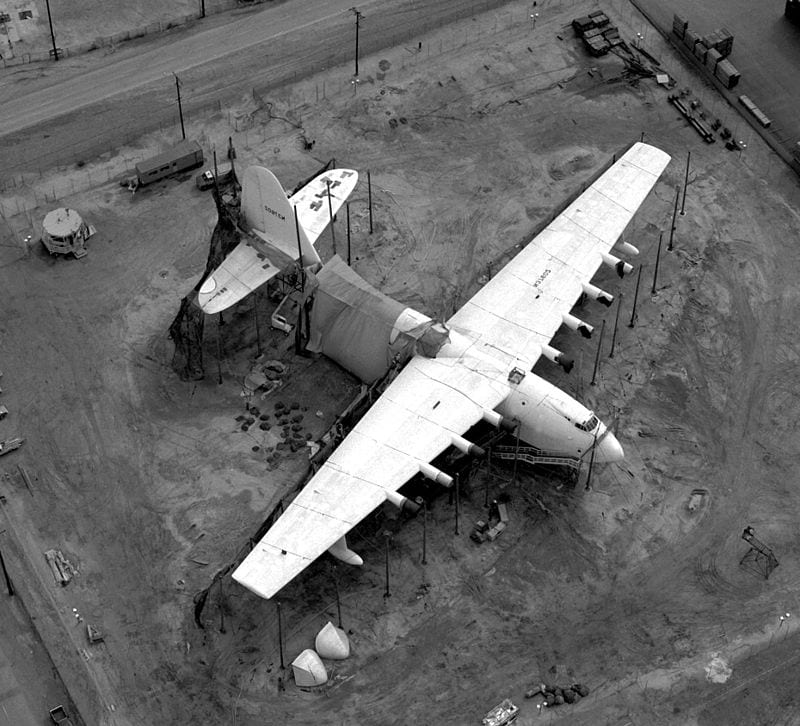
Howard Hughes, Jr.
Airplane pilot, entrepreneur, investor, film producer.
Howard Hughes Jr. (December 24, 1905 – April 5, 1976) was born in Texas to parents who owned a multimillion dollar oil tool company. Hughes was the heir to the company, making him a millionaire as a young man. He used this money to start companies of his own, multiplying it into a vast amounts of wealth. He also introduced groundbreaking innovations to the aviation industry. Hughes showed America that the risk-takers are the ones who find success.
Howard Hughes Jr. is known for being an innovator in several different industries which made him vastly wealthy. He was an eccentric and recognizable character that earned a long list of achievements throughout the 20th century. He showed people that taking risks is an important step in their pursuit of the American Dream.
Howard Hughes’ father was the owner of Hughes Tool Company, which had a patent on a drill bit that was essential for the oil industry. By the time he was 18, both of Hughes’ parents had died, leaving him as the sole heir to the multimillion dollar company. He decided to hire a team to manage his company for him because he wanted to pursue other dreams; he was too ambitious to be tied down to something he was not passionate about. In 1925, Hughes impulsively moved to Hollywood and used money from Hughes Tool Company to fund his film career. He produced several movies, the most notable ones being Hell’s Angels (1930), Scarface (1932), and The Outlaw (1943). Hell’s Angels was about World War I and featured groundbreaking airplane stunts. Hughes performed a few of the stunts himself, proving to be a naturally skilled pilot. Hell’s Angels made Hughes a major player in Hollywood.
At the height of his success in the film industry, he abruptly turned his focus to the airplane industry. Hughes was not happy with the airplanes that had currently been manufactured, so he decided to build his own. In 1932, he launched the Hughes Aircraft Company, and hired some of best engineers in America to help him build faster, more streamlined airplanes. The first plane that his company created was the H-1 monoplane. Despite having an army of test pilots at his command, Hughes demanded to be the first to fly the new plane. “Why should I pay someone else to have all the fun?” he said. Hughes’ flew the plane at 352 mph, breaking the land plane speed record before crash landing the plane in a beet field. Hughes crashed several planes during his career, but none of these traumatic experiences could hinder his passion for flight. He spent the rest of the 1930’s competing in air races and setting world records. He set the record for flying around the world in 91 hours, which was less than half the time of the previous record holder. He risked his life many times performing these amazing aeronautical feats, showing Americans that fear of failure was the only thing holding them back from accomplishing greatness.
After creating the world’s fastest plane, Hughes’ turned his sights to creating the world’s largest plane. He wanted to build an airplane that could carry not just people, but also heavy duty vehicles. In 1942, the US government agreed to help fund Hughes’ new project, which he called the Hercules. The Hercules “had a wingspan of 321 feet, and was designed to carry a payload of 65 tons for 3,000 miles.” It would, in theory, be able to carry 750 troops or two tanks, which would be helpful for fighting World War II overseas. Halfway through the airplane’s construction, the United States military decided to cut funding for the project, because the military needed to focus more on manufacturing small bomber airplanes. The press tore him apart for spending so much government money on a plane that now served no function. Despite the noise from the media, he decided to continue building the plane with his own money. When the Hercules was finally completed in 1947, Hughes and a team of engineers took it out for its first flight. His reputation was on the line during the plane’s first flight; if it was unable to fly, he would become the laughing stock of America. With America watching, the plane successfully took off and became the largest plane to ever grace the skies at that point.
From then on, Hughes spent his days conducting various business endeavors. He started a medicine company and a real estate company. He bought an airline, casinos, and gold mines. Hughes’ empire ventured boldly into many industries, unperturbed by the possibility of defeat.
Howard Hughes showed tremendous risk throughout his entire life. He risked his life by flying planes that had never been tested, and became an award winning pilot. He risked his fortune by investing millions into new businesses, and became one of the wealthiest people of his era. His life is a testament that “only those who dare to fail greatly can ever achieve greatly” – Robert Kennedy.
